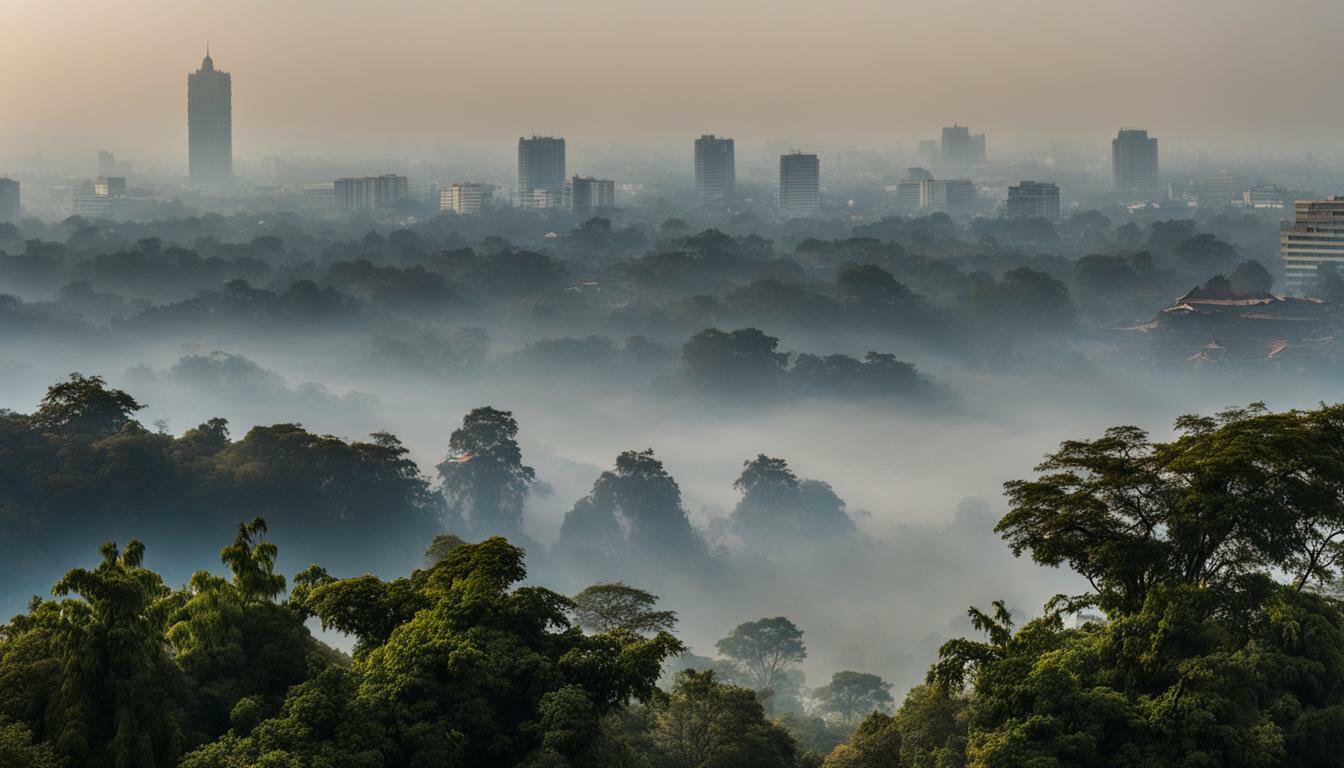Burning season is a significant environmental concern in Chiang Mai, Thailand, and the surrounding areas during the dry season. It is characterized by a thick haze of smoke resulting from agricultural activities such as crop burning that pollutes the air and causes respiratory and cardiovascular problems. To tackle this issue, it’s essential for both locals and visitors to understand the causes, impact, and how to safeguard themselves during this period.
- Burning season is a serious environmental concern in Chiang Mai, Thailand that occurs during the dry season.
- The smoke haze resulting from agricultural activities such as crop burning causes air pollution that presents respiratory and cardiovascular problems.
- To tackle this issue, it’s essential for both locals and visitors to understand the causes, impact, and how to safeguard themselves during this period.
Causes of Burning Season
The burning season in Chiang Mai is primarily caused by agricultural practices, such as slash-and-burn farming and the burning of crop residues. These activities produce a significant amount of smoke and particulate matter that contribute to air pollution in the region. In addition to agricultural practices, forest fires and wildfires also contribute to the burning season in Chiang Mai.
The Thai government has implemented pollution control measures to address the issue of crop burning. In 2019, the government announced a ban on all outdoor burning in the northern regions of Thailand, including Chiang Mai, from 16th March to 30th April. This ban aims to reduce the impact of agricultural burning on air quality and mitigate the negative health effects caused by smoke haze. The government has also implemented regulations on crop burning, requiring farmers to obtain permits and follow specific guidelines when burning fields and crop residues.
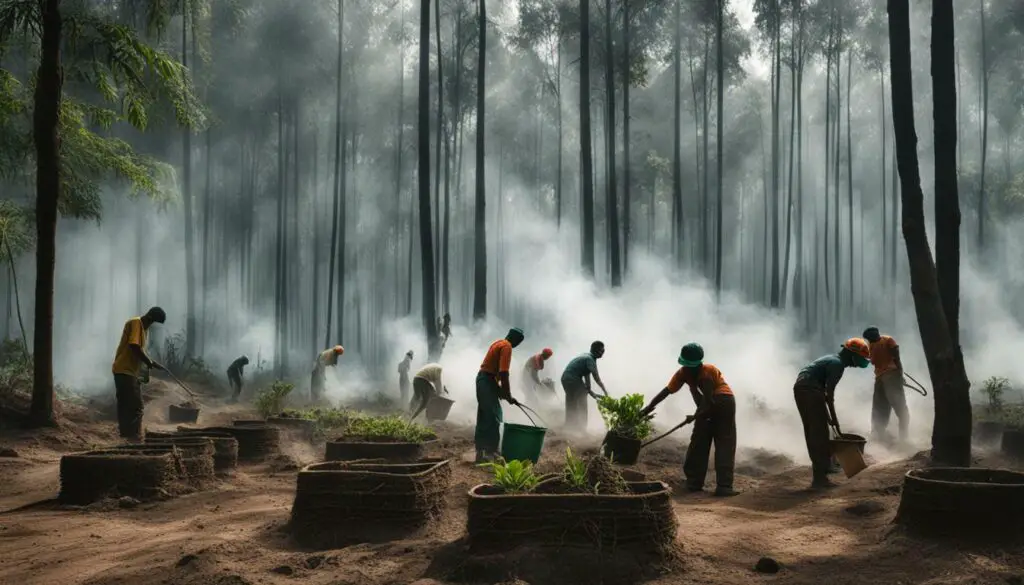
| Types of Agricultural Burning | Impact on Air Quality |
|---|---|
| Slash-and-burn farming | Produces high levels of particulate matter and carbon monoxide |
| Burning of crop residues | Produces smoke and particulate matter that contribute to air pollution |
Government Regulations on Crop Burning
The Thai government has been actively enforcing regulations on crop burning to reduce the impact of agricultural practices on air quality. These regulations require farmers to obtain permits prior to burning and to follow specific guidelines, such as burning during daylight hours and avoiding burning on windy days. The government has also established penalties for farmers who violate these regulations, including fines and imprisonment.
Impact of Burning Season on Air Quality
Chiang Mai’s burning season has a significant impact on air quality in northern Thailand. The smoke haze caused by agricultural fires and other sources of air pollution can lead to hazardous levels of particulate matter in the air, which can have serious health consequences for those living in the region.
Particulate matter, or PM, refers to tiny particles in the air that can be inhaled into the lungs and cause respiratory and cardiovascular problems. PM10 and PM2.5 are two of the most harmful types of particulate matter, with diameters of 10 micrometers and 2.5 micrometers or less, respectively. PM2.5 is especially dangerous because it can penetrate deep into the lung tissue and even enter the bloodstream.
According to the World Health Organization, exposure to high levels of PM2.5 can increase the risk of heart disease, stroke, lung cancer, and other respiratory illnesses. The long-term effects of exposure to air pollution are still being studied, but research suggests that it may also have cognitive and neurological impacts.
The air quality index, or AQI, is used to measure air quality levels, with higher numbers indicating poorer air quality. During the burning season, AQI levels in Chiang Mai and other parts of northern Thailand can reach hazardous levels, with readings exceeding 300 on some days. AQI levels above 100 are considered unhealthy, and levels above 300 are considered hazardous to everyone’s health.

It’s important to stay informed about air quality levels during the burning season and to take appropriate precautions to safeguard one’s health. These measures can include wearing protective masks, limiting outdoor activities, and staying indoors with air purifiers running. Individuals with pre-existing respiratory or cardiovascular conditions, as well as the elderly, pregnant women, and children, are particularly vulnerable to the health impacts of air pollution and should take extra care during this period.
Impact of Burning Season on Air Quality
In addition to the immediate health impacts, the burning season also has broader environmental and economic consequences for northern Thailand. The smoke haze can harm crops and other vegetation, affecting agriculture and local ecosystems. It can also have a negative impact on tourism, as visitors may be deterred by the poor air quality and reduced visibility.
Efforts are underway to address the burning season and improve air quality in northern Thailand. These include government regulations aimed at reducing crop burning and increasing pollution controls, as well as community-led initiatives that promote sustainable land management practices. Collaboration among regional and international organizations is also key to finding long-term solutions to this pressing environmental issue.
Health Risks of Burning Season
The burning season in Chiang Mai poses significant health risks to both locals and tourists. Prolonged exposure to air pollution can lead to respiratory and cardiovascular problems, as well as exacerbate existing conditions such as asthma and allergies. The smoke haze from burning practices can irritate the eyes, nose, and throat, and cause coughing, wheezing, and shortness of breath.
Children, the elderly, pregnant women, and individuals with pre-existing health conditions are particularly vulnerable to the health risks of burning season. It is important to take preventative measures to minimize exposure to air pollution and safeguard one’s health during this period.
Protective Measures
- Stay indoors as much as possible, especially during the peak burning season months of February to April.
- Use air purifiers and keep windows and doors closed to prevent smoke from entering the house or apartment.
- Wear N95 masks or other protective masks when going outside, especially when engaged in physical activity.
- Avoid outdoor exercise or strenuous activity during periods of high air pollution.
- Eat a healthy diet and stay hydrated to boost the immune system and minimize the impact of air pollution on the body.

Be aware of air pollution levels in your area and monitor them regularly using apps or websites that provide real-time information. In addition, seek medical attention if you experience any symptoms of respiratory or cardiovascular problems. Prompt treatment can help mitigate the long-term effects of air pollution on the body.
Overall, understanding the health risks of burning season is essential for safeguarding oneself during this period. By taking proactive measures and staying informed, individuals can minimize their exposure to air pollution and protect their health.
Understanding Sustainable Alternatives
Given the negative impact of crop burning on air quality, efforts are being made to develop sustainable alternatives to this traditional practice in Chiang Mai. One promising solution is the use of agroforestry.
Agroforestry involves the cultivation of trees alongside crops, which has been found to improve soil health and increase yields while reducing the need for burning. This method also helps to sequester carbon in the soil and mitigate climate change impacts.
Another alternative is the adoption of precision agriculture techniques, which use technology to optimize crop production and reduce waste. This approach can help farmers improve their bottom line while reducing the need for burning.

Additionally, there are efforts to promote eco-tourism and sustainable land management practices, which can help generate income for local communities while protecting the environment. These initiatives include organic farming, reforestation, and the use of renewable energy sources.
While these alternatives may take time and resources to implement, they offer a promising path forward for reducing air pollution and promoting sustainable development in Chiang Mai and other regions of northern Thailand.
Government Efforts and Regulations
As the burning season’s impact on air quality has become more apparent, the Thai government has taken action to address the issue. In 2019, the government implemented a new regulation banning the burning of sugarcane fields before harvesting, a practice that previously contributed significantly to the smoke haze in Northern Thailand. Additionally, authorities have increased efforts to enforce existing regulations on crop burning and are working to educate farmers on sustainable alternatives.
However, despite these efforts, the burning season remains a significant issue in Chiang Mai and the surrounding areas. Critics argue that the government must do more to enforce existing regulations and invest in more sustainable agricultural practices.
One promising initiative is the Thailand Clean Air Network, a coalition of government agencies, academics, and civil society organizations dedicated to improving air quality across the country. The network has launched several campaigns to raise awareness about air pollution and advocate for stronger regulations.
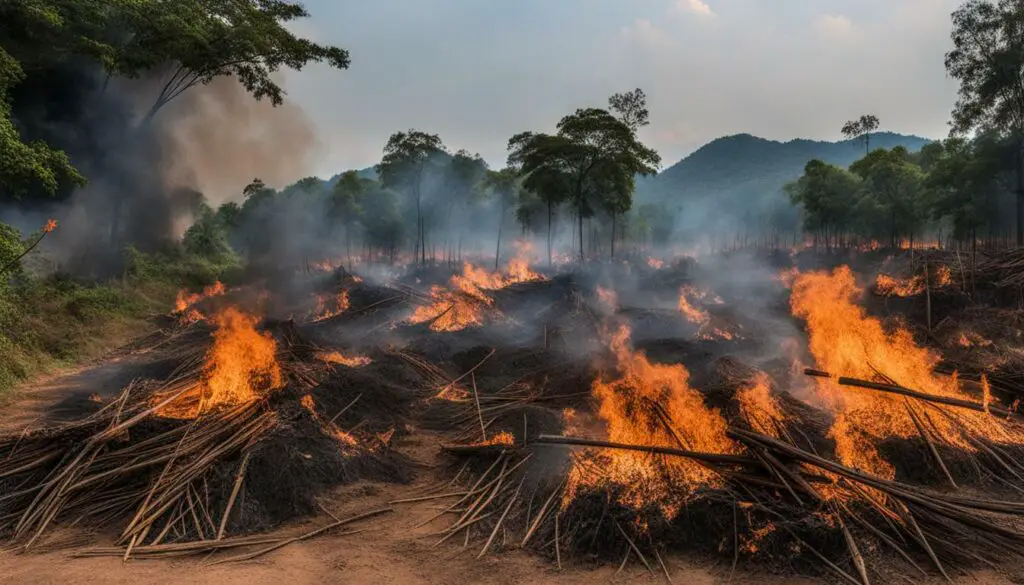
In addition to government efforts, several organizations and businesses in Chiang Mai are taking steps to reduce their impact on air quality, such as using eco-friendly materials and implementing green practices. The Chiang Mai Green City network, for example, is a platform for businesses and communities to share ideas and collaborate on sustainable initiatives.
Conclusion
While the government has made some progress in addressing the burning season and air pollution in Chiang Mai, there is still much work to be done. Community-led initiatives and collaborations with international organizations will be crucial in finding sustainable solutions to this complex issue. By continuing to raise awareness and take collective action, we can work towards improving air quality not only in Chiang Mai but throughout Northern Thailand.
Impact of Burning Season on Tourism
The burning season in Chiang Mai not only impacts local communities but also has a significant effect on tourism in the region. The smoke haze that envelops the city and surrounding areas during this period can cause discomfort for visitors and affect their overall experience.
The impact on tourism can be particularly damaging for the local economy, as the industry is a crucial source of income for many in the region. Visitors may opt to cancel their trips or shorten their stays, which can result in losses for businesses that rely on tourism.
Efforts are being made to address this issue, including promoting sustainable tourism practices that minimize the impact of air pollution. For example, some tour companies offer eco-tourism experiences that focus on sustainable agriculture and environmental conservation.
While it is important to support the local economy, it is equally crucial to prioritize the health and well-being of tourists. Visitors should monitor air quality levels and take necessary precautions, such as wearing protective masks and avoiding outdoor activities during periods of high air pollution.
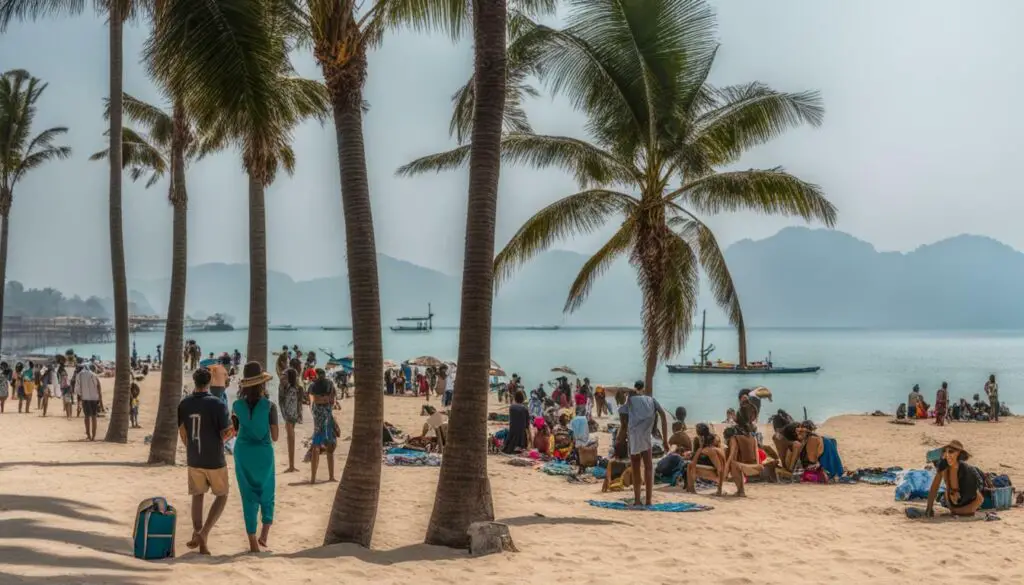
By taking a proactive approach towards air pollution and promoting sustainable tourism practices, both locals and visitors can work together to mitigate the impact of the burning season on tourism in Chiang Mai.
Community Initiatives for Reducing Air Pollution
While government efforts are important in addressing the burning season and air pollution in Chiang Mai, community-led initiatives are also making a significant impact.
One such initiative is the Chiang Mai Clean Air Network, a grassroots organization focused on raising awareness about air pollution and advocating for clean air policies and practices. Through various campaigns and activities, they aim to engage local residents, businesses, and government officials in efforts to reduce air pollution in the region.
Another community-led effort is the Clean Air Initiative for Chiang Mai, which focuses on promoting sustainable transportation alternatives and reducing vehicle emissions. They have implemented bike share programs, organized car-free days, and encouraged the use of electric and hybrid vehicles.
Local schools have also taken action to address air pollution. The Panyaden International School in Chiang Mai has implemented a Green School program to promote sustainable practices among students and staff. They have implemented recycling programs, reduced energy consumption, and installed air purifiers in classrooms.
These community initiatives are just a few examples of the many efforts being made to reduce air pollution in Chiang Mai. Through collaboration and collective action, local residents and organizations are making a positive impact on the region’s air quality.
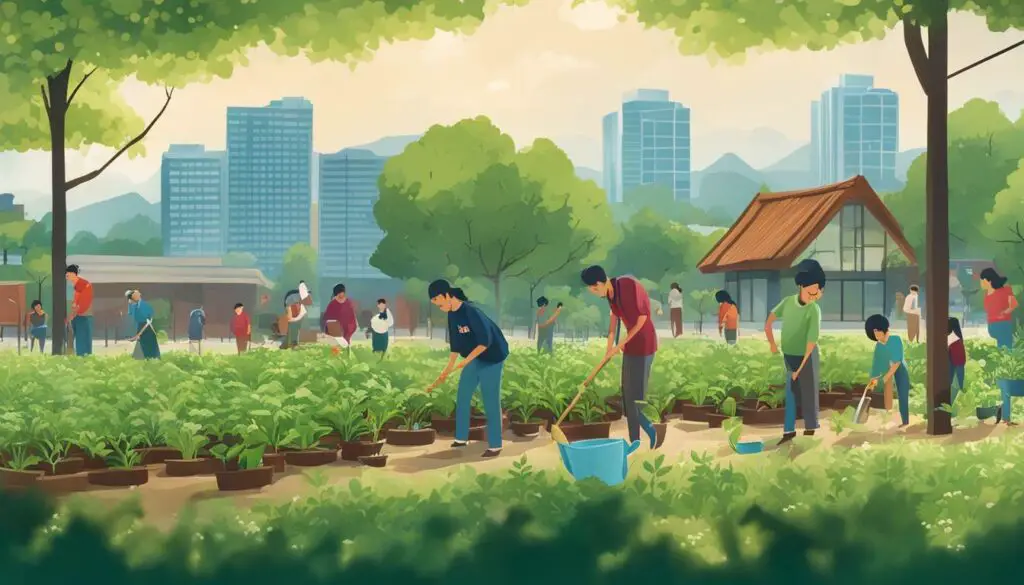
During the burning season in Chiang Mai, air pollution levels can be hazardous to health. It is essential to take precautions to safeguard oneself from the potential health risks associated with prolonged exposure to smoke haze.
One of the most effective ways to monitor air quality is by downloading a reliable air quality app on your smartphone. AirVisual is a popular app that provides real-time air quality data for locations around the world, including Chiang Mai. By checking the air quality index (AQI) regularly, you can plan your outdoor activities accordingly and avoid exposure to high levels of pollution.
Wearing a protective mask can also help reduce exposure to smoke particles in the air. When choosing a mask, it is important to use one that is designed to filter out fine particles, such as an N95 mask. You can find these masks in most pharmacies and supermarkets in Chiang Mai.
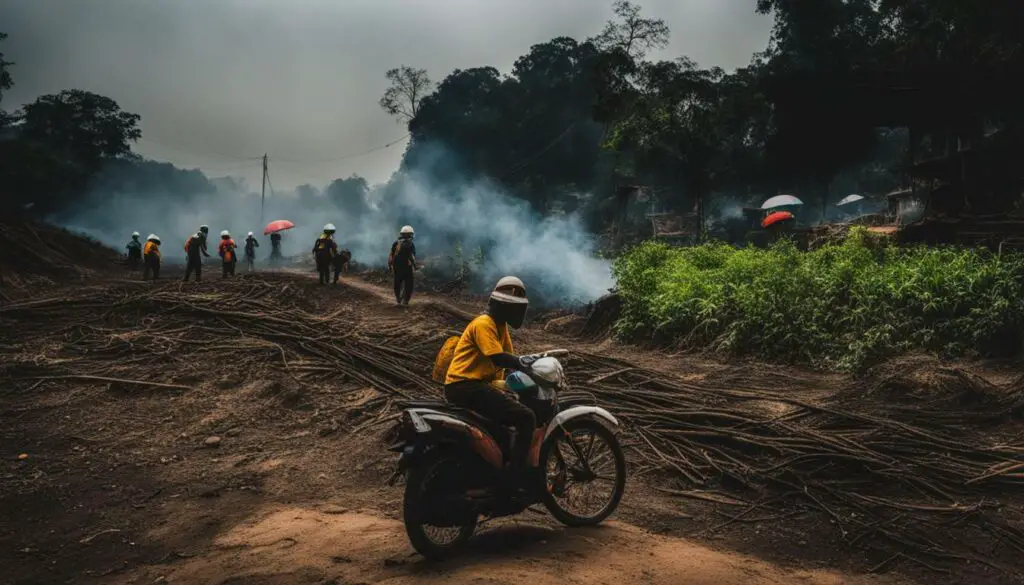
In addition to these precautions, you should adopt healthy practices that can minimize the impact of air pollution on your health. This includes staying hydrated, eating a balanced diet rich in antioxidants, and getting plenty of rest.
By taking these measures, you can help minimize the health risks associated with the burning season and ensure that you are protecting yourself and your family from the harmful effects of air pollution.
Understanding Air Pollution in Chiang Mai
While the burning season is a significant contributor to air pollution in Chiang Mai, it is not the only source of concern. Other factors such as industrial emissions, traffic, and construction also contribute to poor air quality in the region.
The Thai government has implemented various measures to address air pollution, including the development of a National Air Quality Action Plan. This plan includes initiatives such as reducing vehicle emissions, promoting clean energy, and improving public transportation. Additionally, the government has set national air quality standards and established monitoring stations throughout the country to track pollution levels.
Despite these efforts, air pollution in Chiang Mai remains a persistent problem. In fact, in 2020, the city was ranked as the ninth most polluted city in the world by IQAir, a global air quality platform. Prolonged exposure to polluted air can lead to a range of health issues, from respiratory problems to heart disease.
To combat air pollution, it’s essential for individuals to take action as well. This includes reducing personal vehicle use, supporting sustainable practices, and advocating for government action. By working together, we can make strides towards a cleaner, healthier environment in Chiang Mai and beyond.
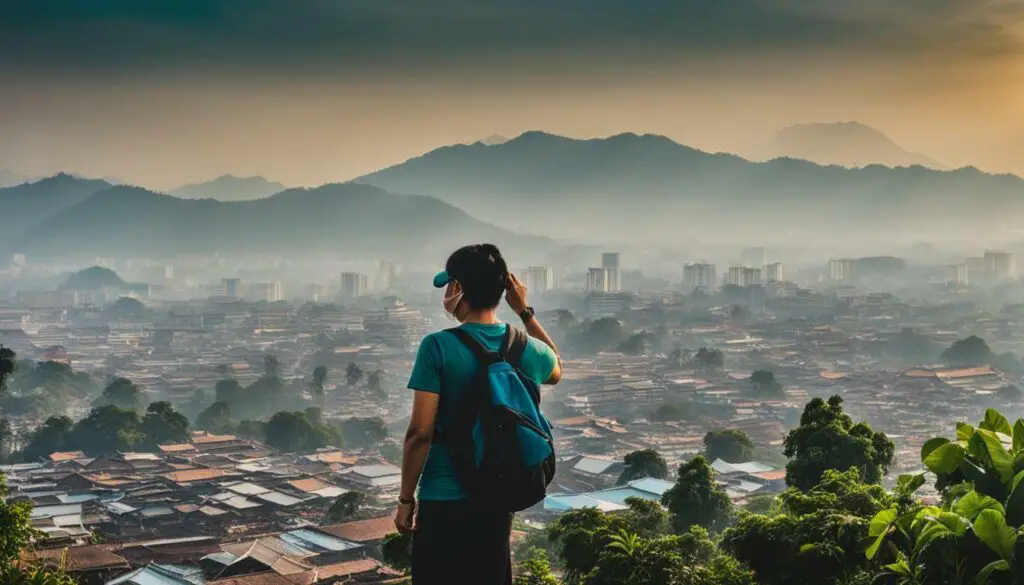
While government regulations and community initiatives are important in reducing air pollution during the burning season, individual actions also play a critical role. By adopting sustainability practices and reducing personal emissions, individuals can contribute to a cleaner environment in Chiang Mai.
One of the most effective ways to reduce personal emissions is by walking, biking, or using public transportation instead of driving a car. Vehicles are a significant source of air pollution, especially in urban areas, and choosing alternative modes of transportation can significantly reduce personal emissions.
Another way individuals can mitigate air pollution is by supporting sustainable practices such as recycling, composting, and reducing plastic use. These practices can help reduce waste and limit the amount of energy used in the production and disposal of materials, ultimately leading to cleaner air.
Lastly, individuals can support community-led initiatives for reducing air pollution, such as volunteering for local clean air projects or participating in awareness campaigns. These initiatives bring people together to work towards a common goal and can have a significant impact on reducing air pollution during the burning season and beyond.

By taking these individual actions, residents and visitors to Chiang Mai can contribute to a healthier and more sustainable environment for everyone. Through collective efforts, we can mitigate the impact of the burning season and work towards a future with cleaner air in northern Thailand.
International Efforts and Collaboration
The issue of smoke haze and air pollution in northern Thailand is not just a local problem, but a regional one that requires international collaboration and efforts. While the Thai government has taken steps to address the burning season and its impact on air quality, there is a need for a more concerted effort from neighboring countries and the international community to find sustainable solutions.
One such effort is the ASEAN Agreement on Transboundary Haze Pollution, signed by ASEAN member countries in 2002, which aims to prevent and control transboundary haze pollution in the region through cooperation and the implementation of preventive measures. Several initiatives have also been undertaken by organizations such as the World Health Organization and the United Nations Development Programme to support countries in addressing air pollution issues.
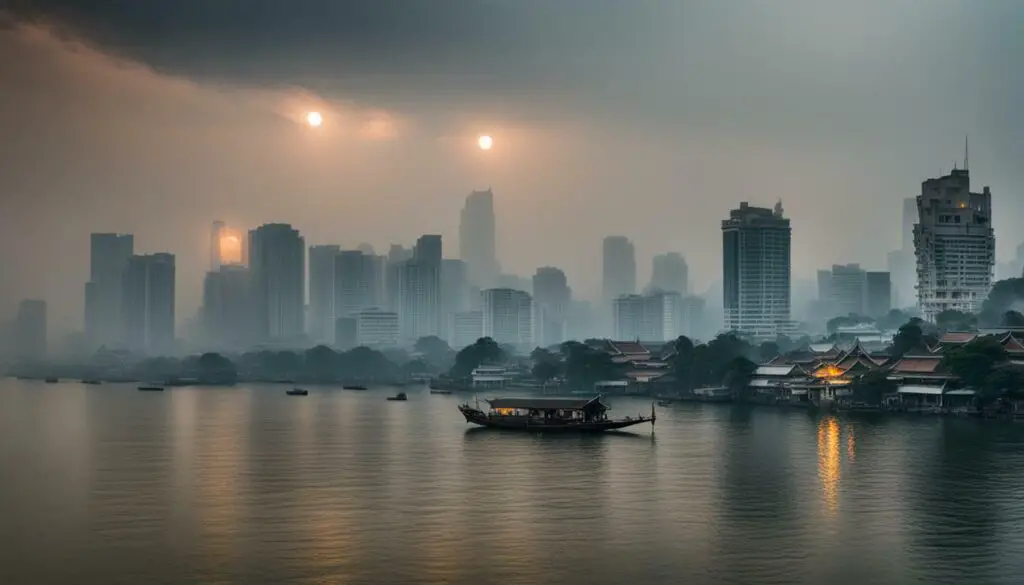
The impact of air pollution extends beyond national borders, and it is crucial for countries to work together to mitigate its effects. By sharing knowledge, resources, and best practices, countries can collectively address this regional issue.
Conclusion
In conclusion, the burning season in Chiang Mai is a significant issue that affects air quality in northern Thailand. It is caused by agricultural practices such as crop burning, which releases smoke and pollutants into the air and poses health risks for both residents and visitors.
While the government has implemented regulations and initiatives to address the problem, there is still more work to be done. Community-led initiatives, including awareness campaigns and clean air projects, are also making a positive impact on reducing air pollution in the region.
Individuals can also play a role in mitigating air pollution by taking personal actions, such as reducing vehicle emissions and supporting sustainable practices.
It is important to understand the impact of the burning season on air quality and take steps to safeguard oneself during this period, including monitoring air quality and using protective masks. It is also crucial to address air pollution beyond the burning season by exploring other sources of pollution and finding sustainable solutions.
International efforts and collaborations are also necessary to tackle the issue of smoke haze and improve air quality in Thailand.
By working together and taking collective action, we can create a cleaner and healthier environment in Chiang Mai and northern Thailand.
FAQ
What is the burning season in Chiang Mai?
The burning season in Chiang Mai refers to a period of increased air pollution caused by agricultural practices, such as crop burning, in the region.
What are the main causes of the burning season?
The main causes of the burning season in Chiang Mai are agricultural practices, including crop burning, and inadequate pollution control measures.
How does the burning season impact air quality in Chiang Mai?
The burning season significantly deteriorates air quality in Chiang Mai, leading to a smoke haze and increased levels of pollutants in the air.
What are the health risks associated with the burning season?
Prolonged exposure to air pollution during the burning season can pose respiratory and cardiovascular risks, potentially leading to health issues.
Are there sustainable alternatives to the burning season?
Yes, there are sustainable alternatives to traditional burning practices in Chiang Mai. Innovative approaches to agriculture and land management can help reduce reliance on burning and mitigate air pollution.
What efforts and regulations has the government implemented to address the burning season?
The government has implemented regulations aimed at reducing crop burning and improving air quality in Chiang Mai. Other initiatives include promoting sustainable tourism practices and supporting community-led campaigns.
How does the burning season affect tourism in Chiang Mai?
The burning season negatively impacts tourism in Chiang Mai due to the reduced air quality and smoke haze, affecting visitor experiences. Efforts are being made to promote sustainable tourism practices during this period.
What are some community initiatives to reduce air pollution during the burning season?
Various community-led initiatives, such as awareness campaigns and clean air projects, are actively working to reduce air pollution during the burning season and make a positive impact in the region.
How can I safeguard myself during the burning season?
To safeguard yourself during the burning season in Chiang Mai, monitor air quality, use protective masks, and adopt healthy practices to minimize exposure to smoke haze.
What is the extent of air pollution in Chiang Mai beyond the burning season?
Air pollution in Chiang Mai extends beyond the burning season and encompasses other sources as well. It is essential to understand the broader context of pollution to address air quality issues effectively.
What role can individuals play in mitigating air pollution?
Individuals can contribute to mitigating air pollution by reducing vehicle emissions, supporting sustainable practices, and actively participating in community initiatives aimed at reducing pollution throughout the year.
What international efforts and collaborations are in place to address air pollution in Thailand?
Efforts and collaborations at the international level are focused on addressing the issue of smoke haze and air pollution in Thailand. Global cooperation is crucial in finding sustainable solutions to this regional problem.
What is the conclusion of the burning season and air pollution in Chiang Mai?
The burning season and air pollution in Chiang Mai require collective action to tackle the issue and improve air quality not only in Chiang Mai but also in northern Thailand. It is vital to prioritize the well-being of the community and the environment.
